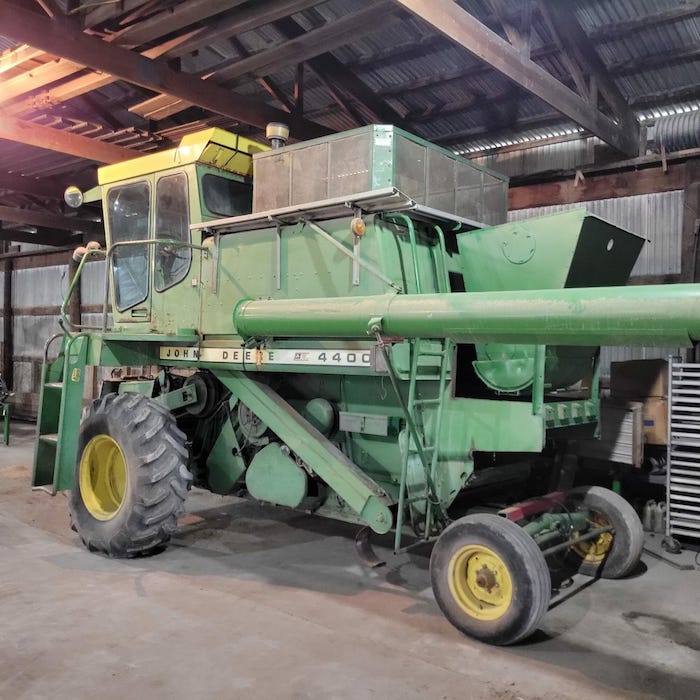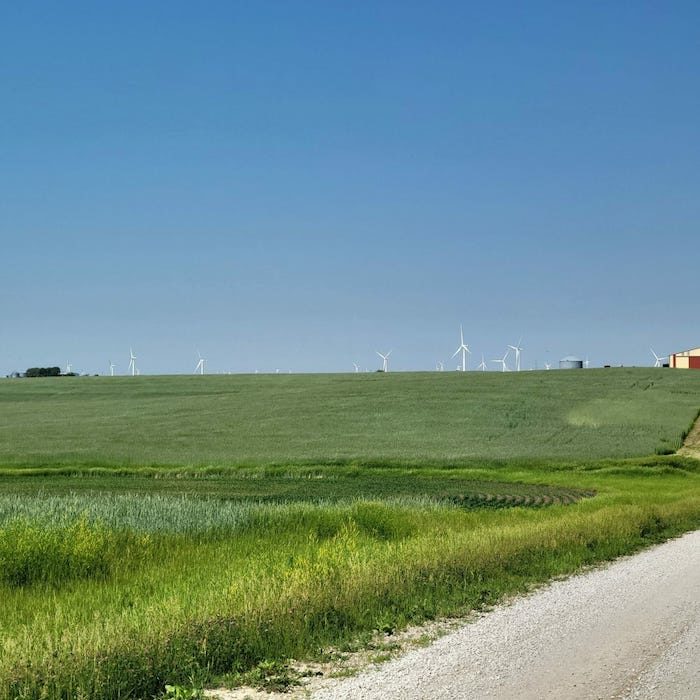
Southwest Iowa farmer, business owner and cover crop advocate Chris Gaesser. Photo via PFI.
Key Tips for Growing Cover Crop Seed
When growing rye to harvest for seed, planting as early as possible in October is key to achieving 2-3 inches of growth before winter. Chris says that a drill or planter is more effective than broadcasting the seed. He plants approximately one bushel (roughly 60 pounds) per acre at a depth of about 2 inches.
In addition to corn and soybeans, Chris grows rye as cover crop seed and as grain for a local distillery. Photo via PFI.
Harvest, Cleaning and Storage
“One of the best pieces of advice that I’ve received for harvesting small grains is to wait a week from whenever you think it is ready. Don’t even look at it. Then come back in a week and that’s when it’s actually ready,” Chris says.When it finally is time to harvest, usually in mid-to-late July, he says that any regular row crop combine will do the job. Ideally, you’ll harvest the rye at a lower moisture content, typically before it starts to lay down.Once cut and in the bin, it is necessary to blow fans on the grain to cool it as quickly as possible to prevent it from spoiling and killing the germination potential. After 2-3 days, as soon as the grain is dry enough, Chris begins the cleaning process to remove straw and heads that tend to retain moisture. His modified John Deere 4400 combine uses the hopper system to dump the seed directly onto the sieves to be cleaned, and it is then augured directly into storage bags.
Chris uses a modified John Deere 4400 to clean the rye seed. Photo via PFI.





Post a comment
Report Abusive Comment